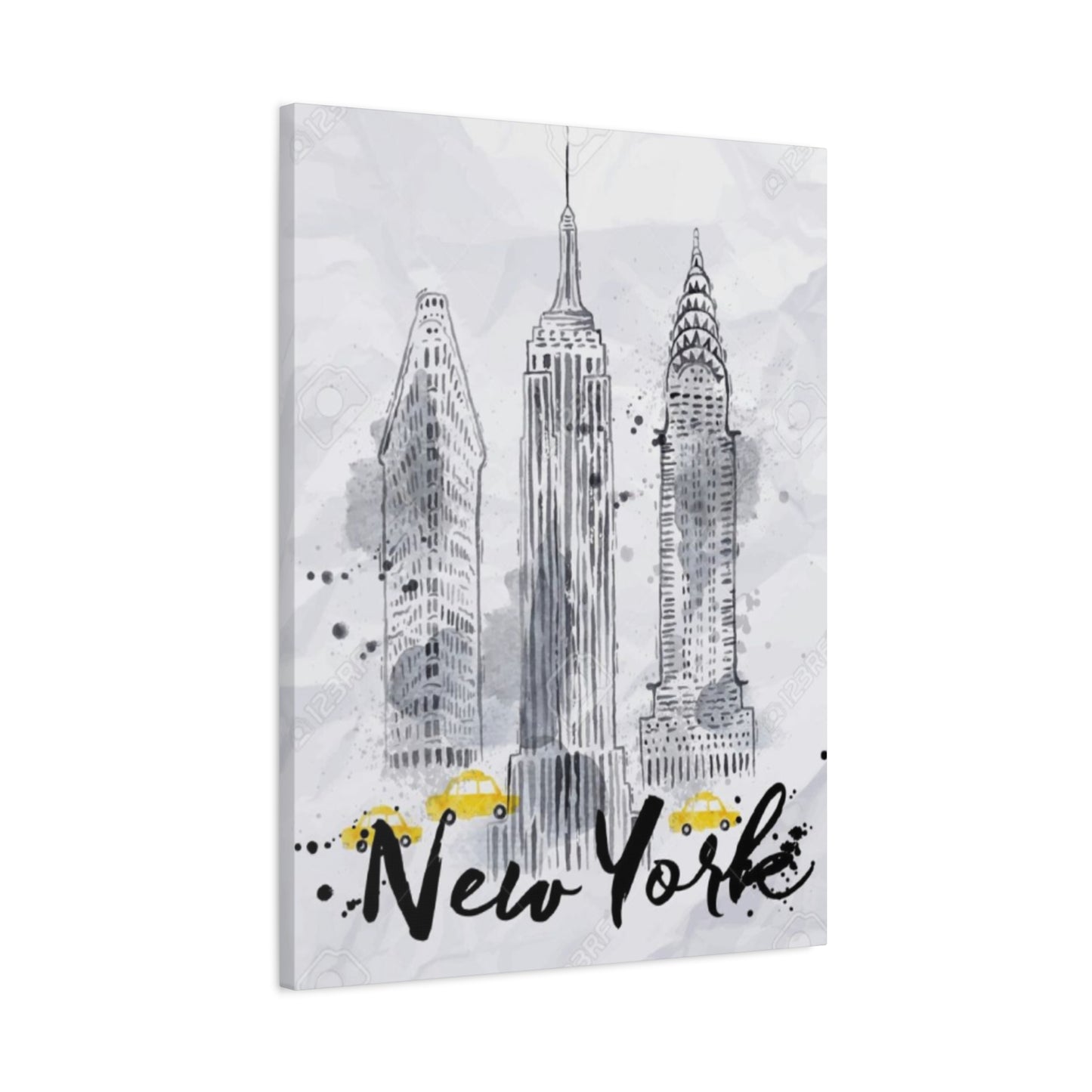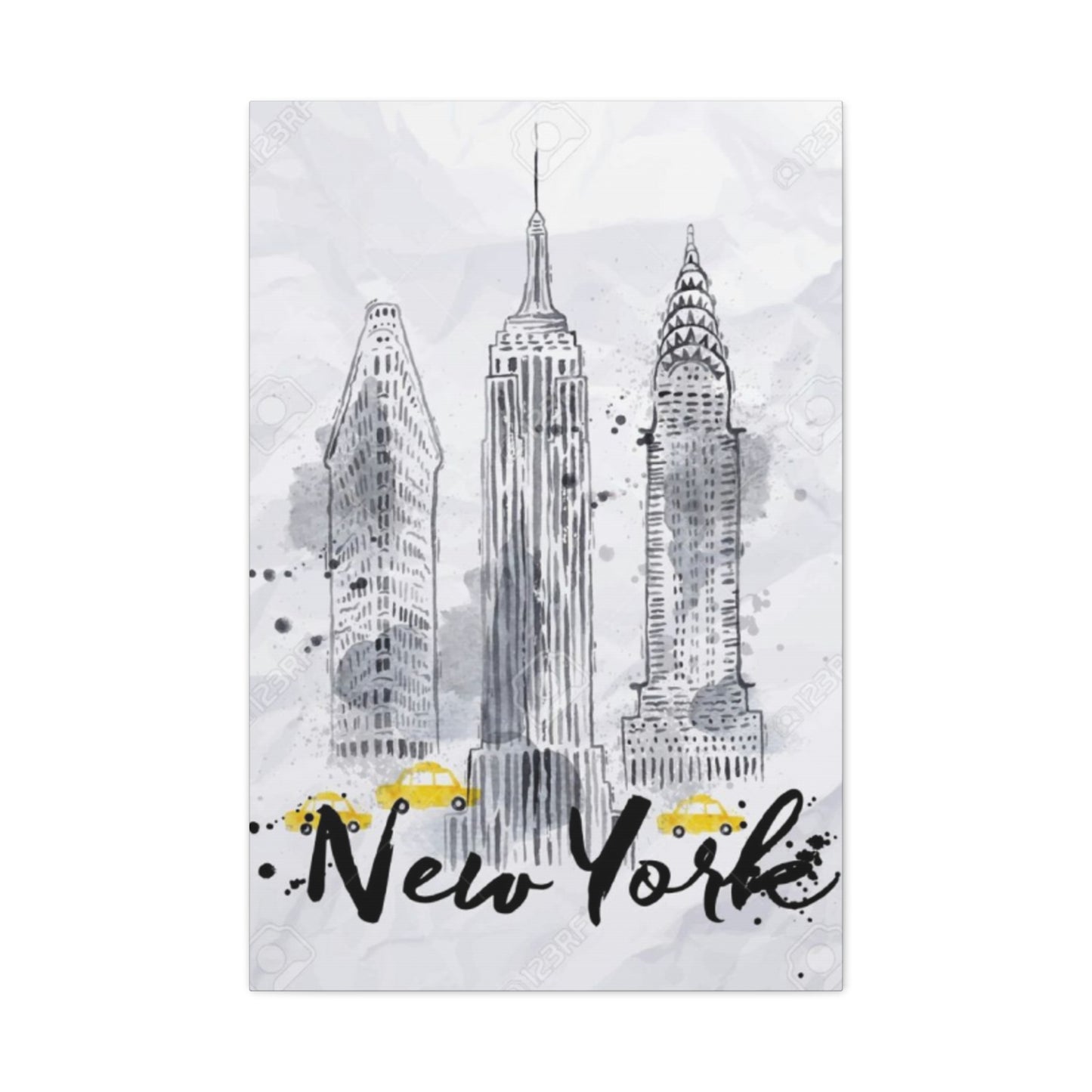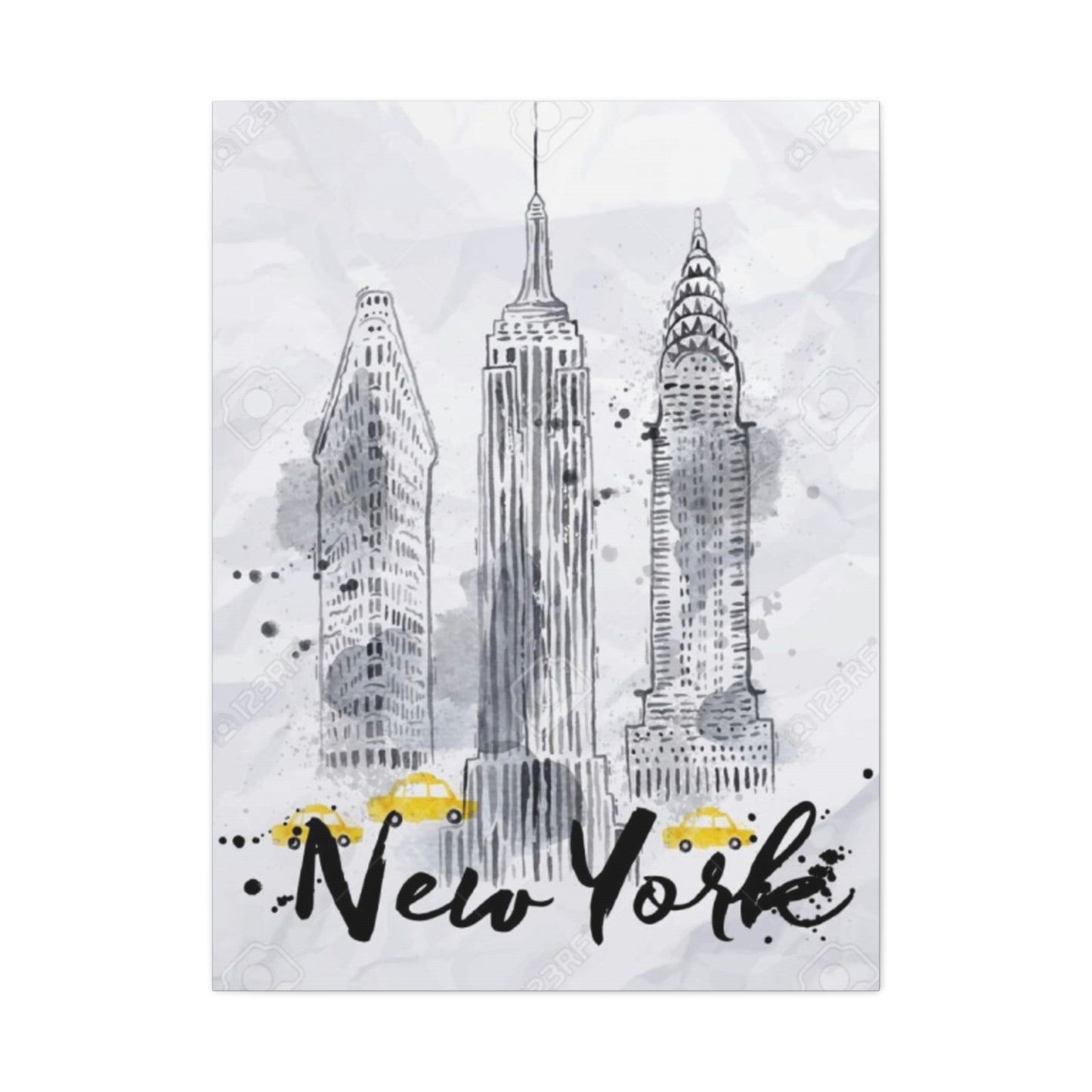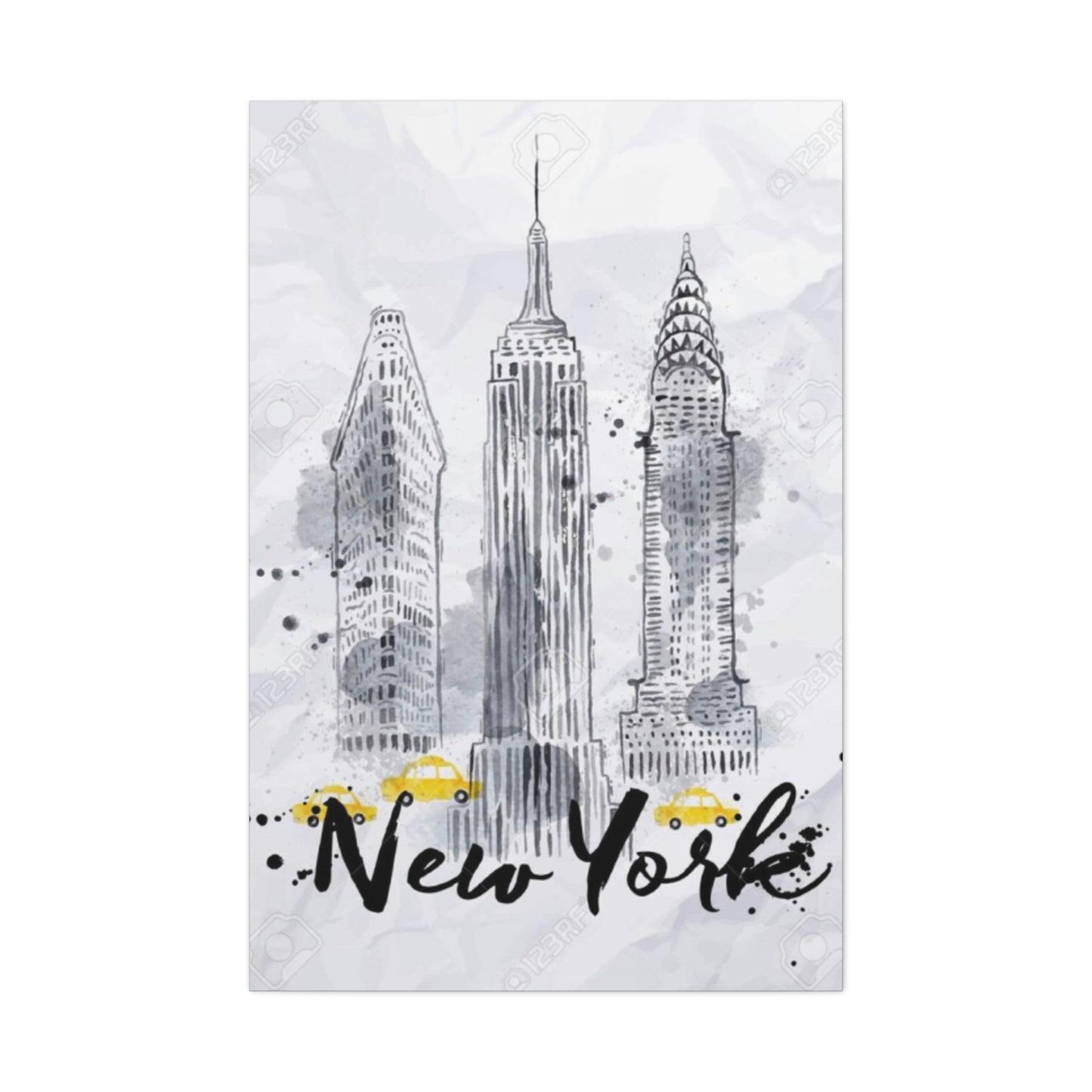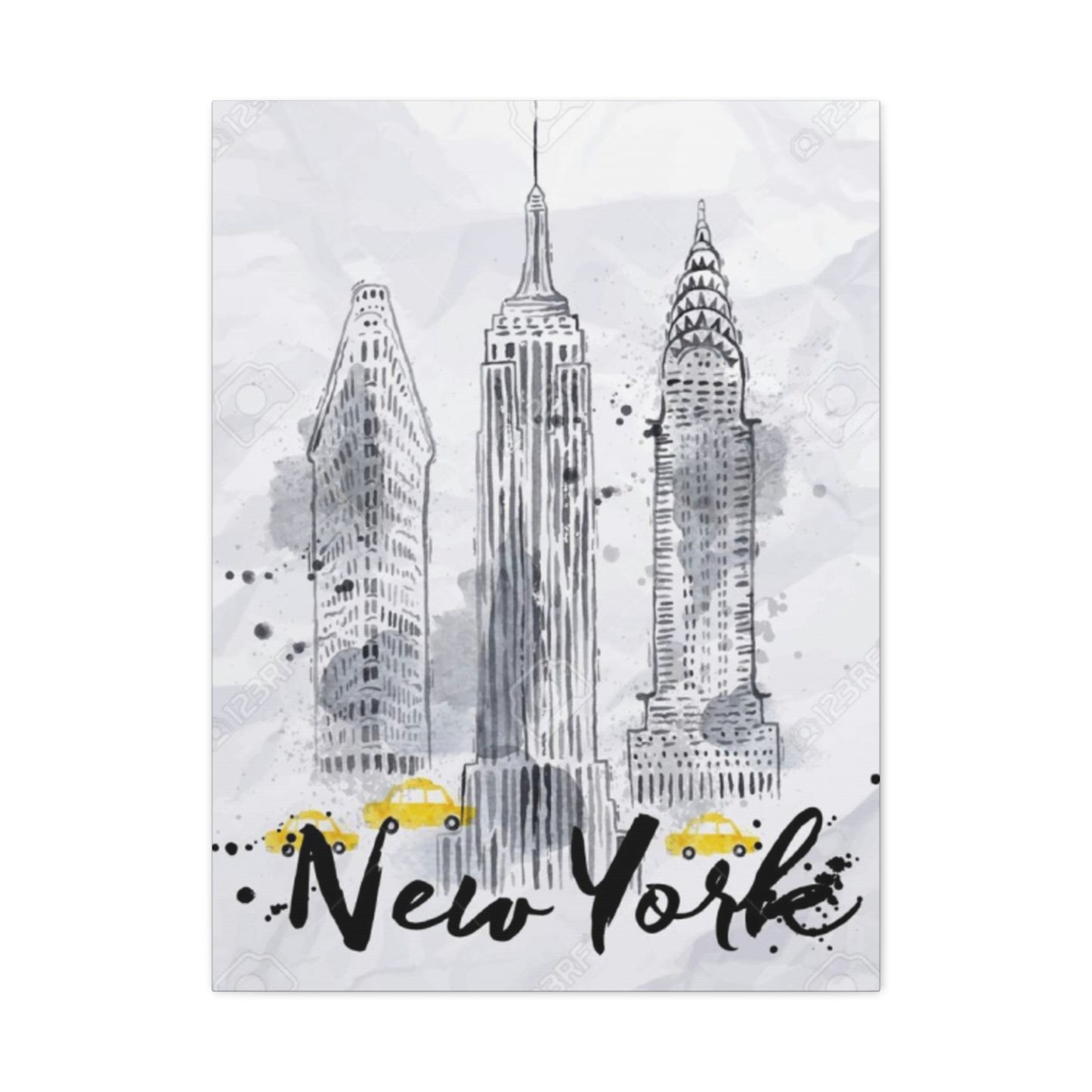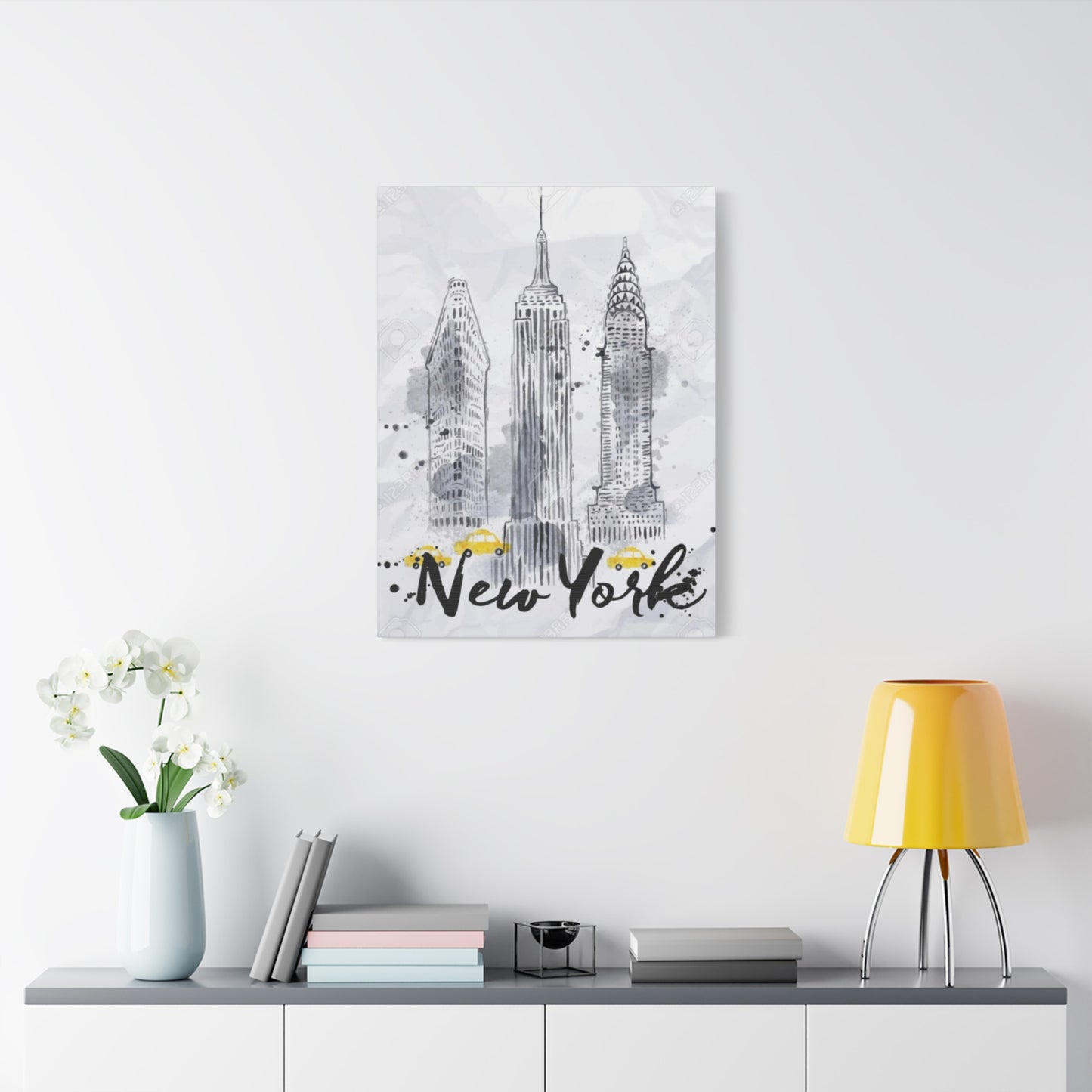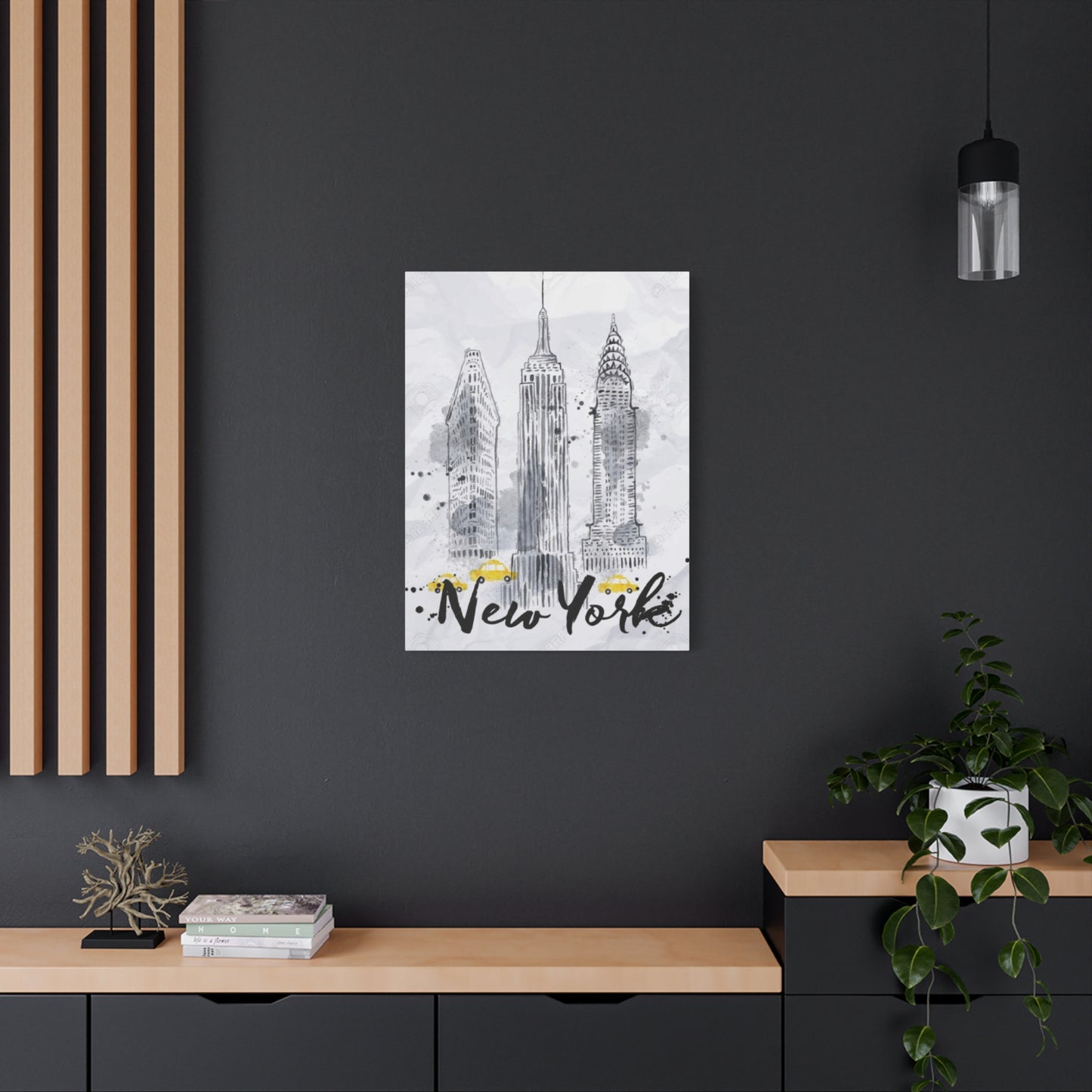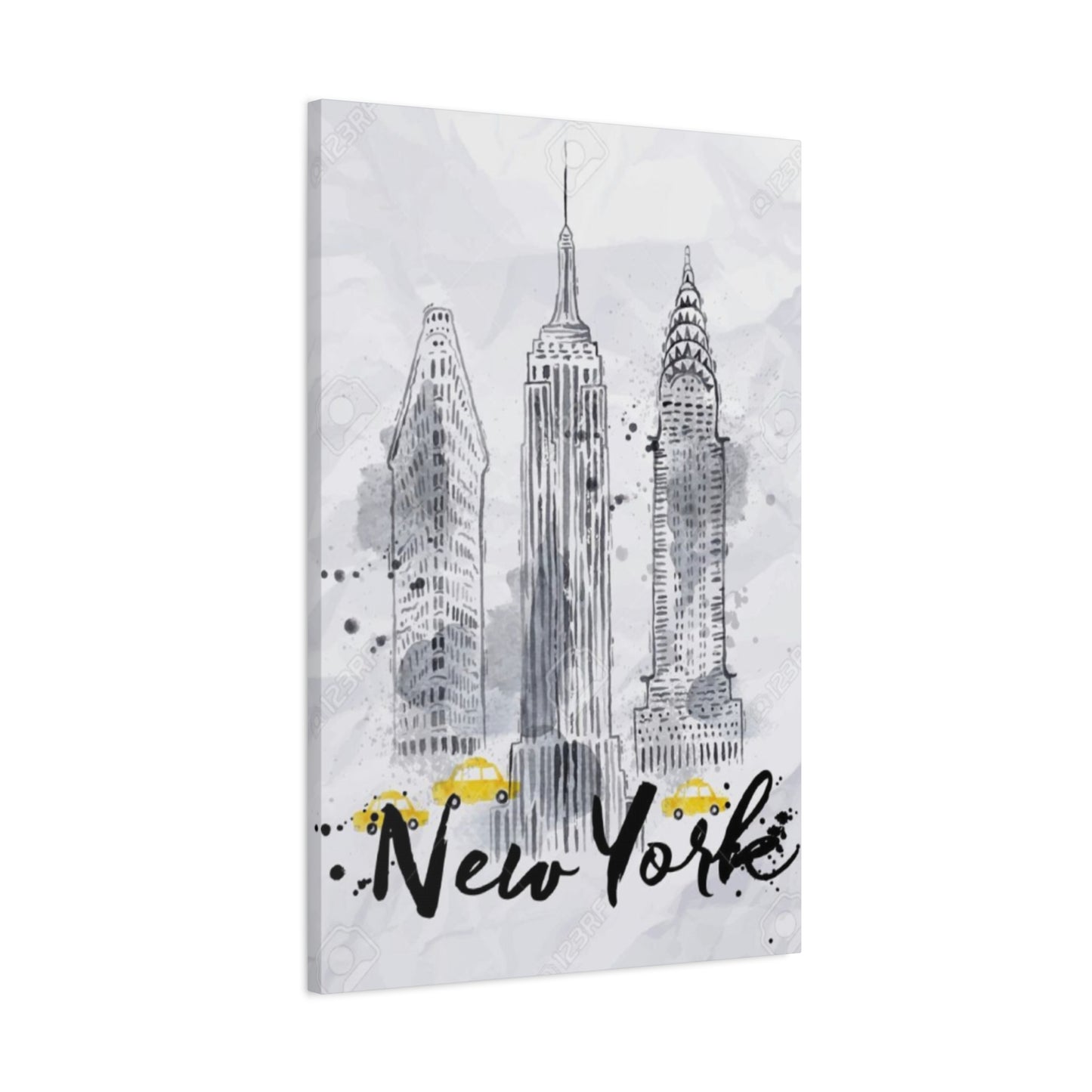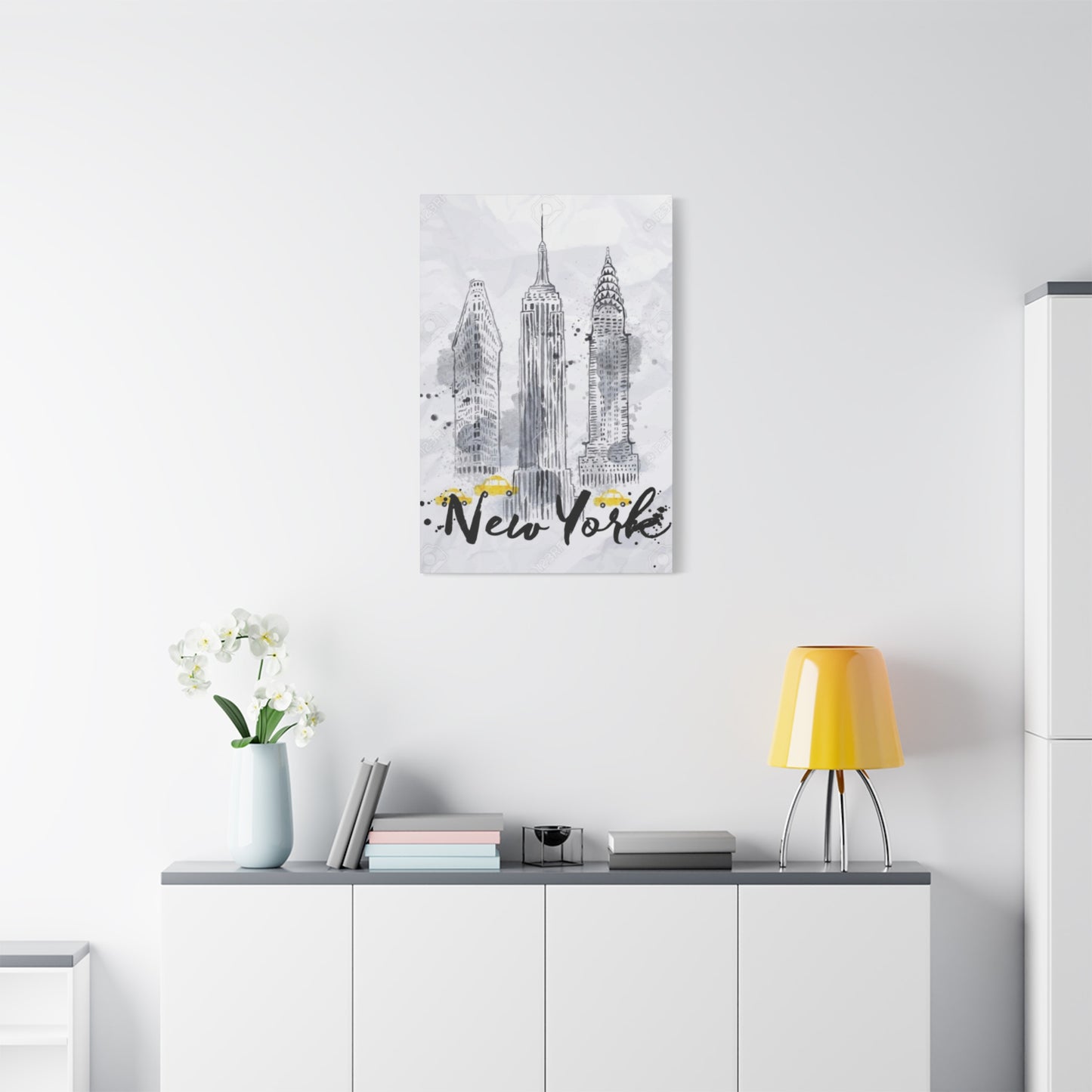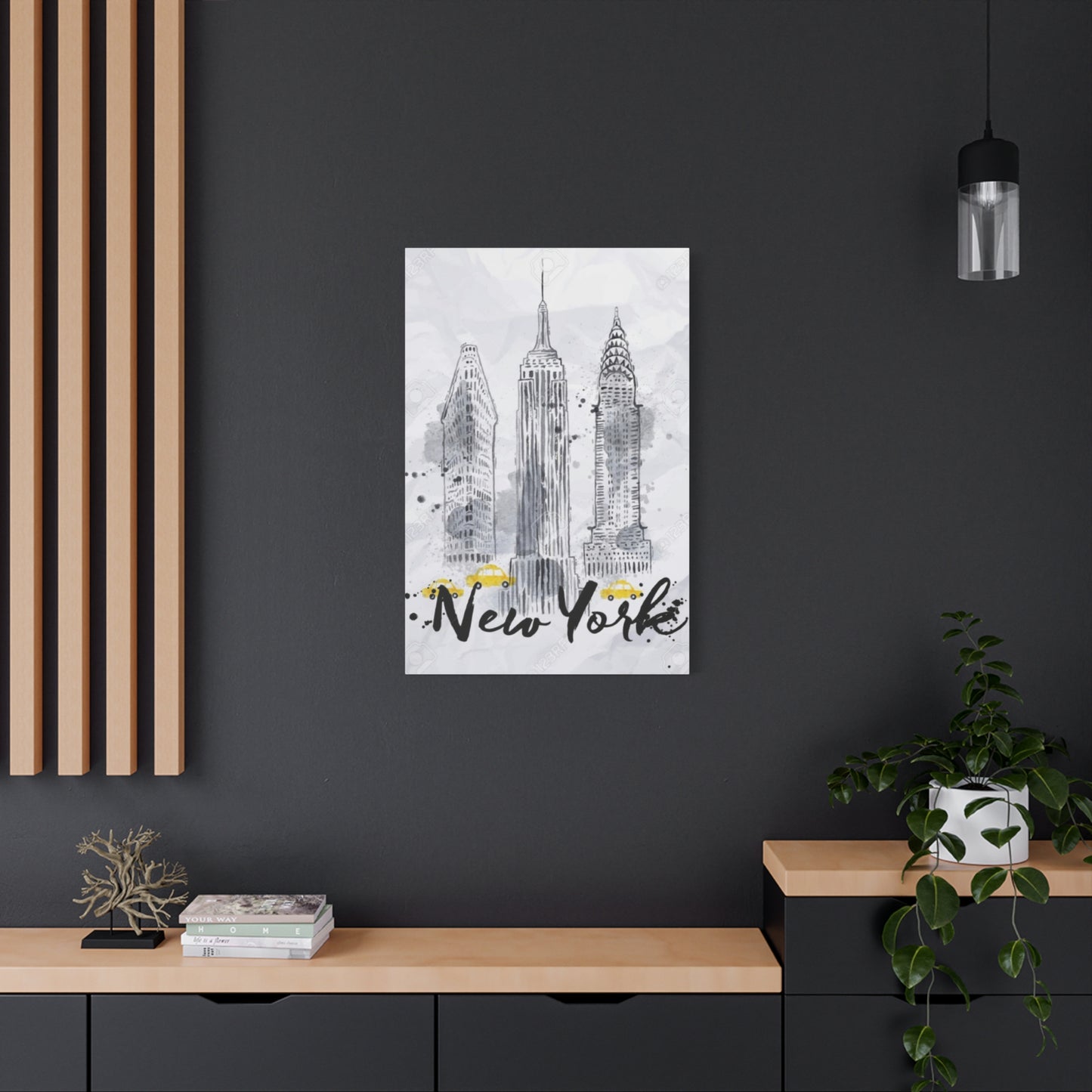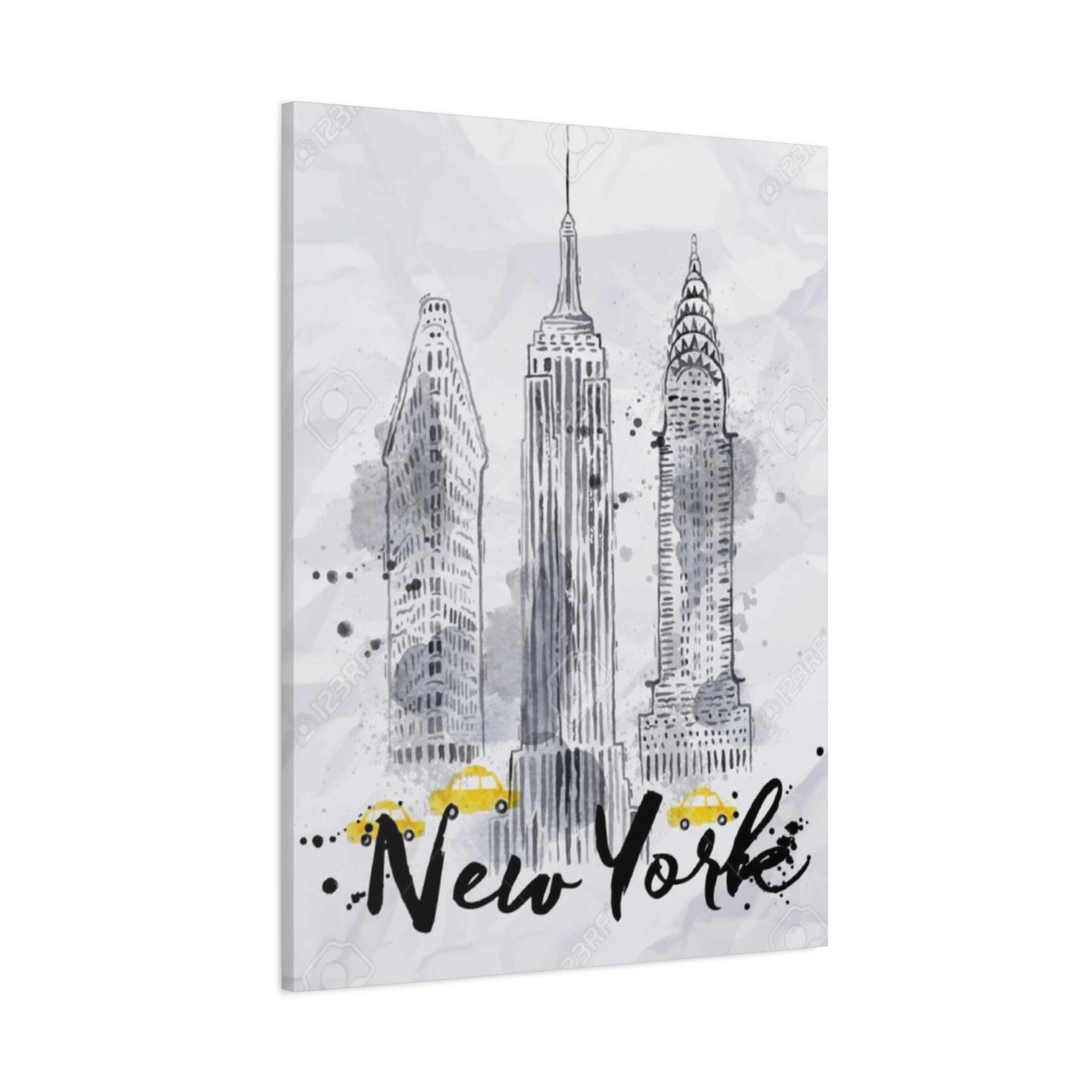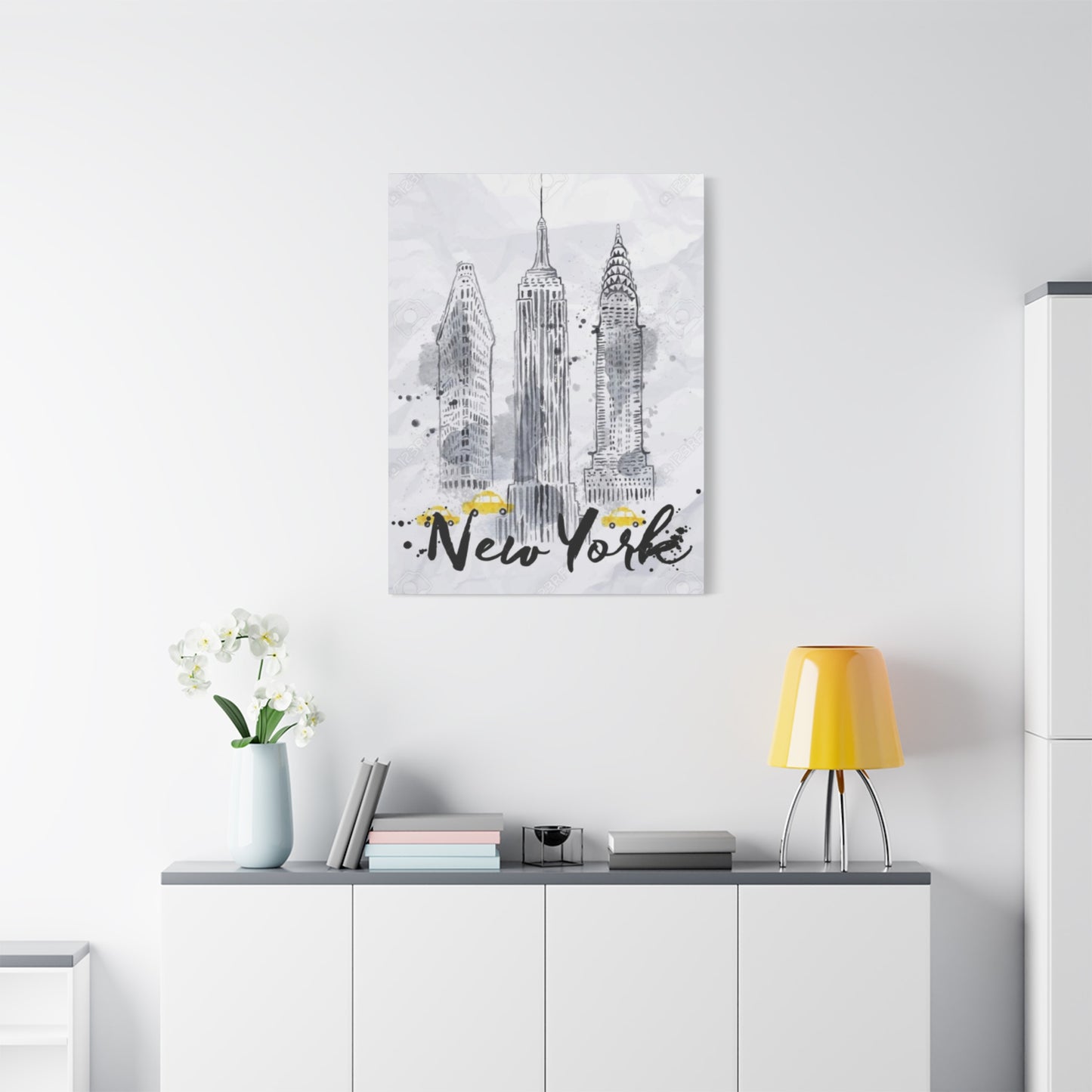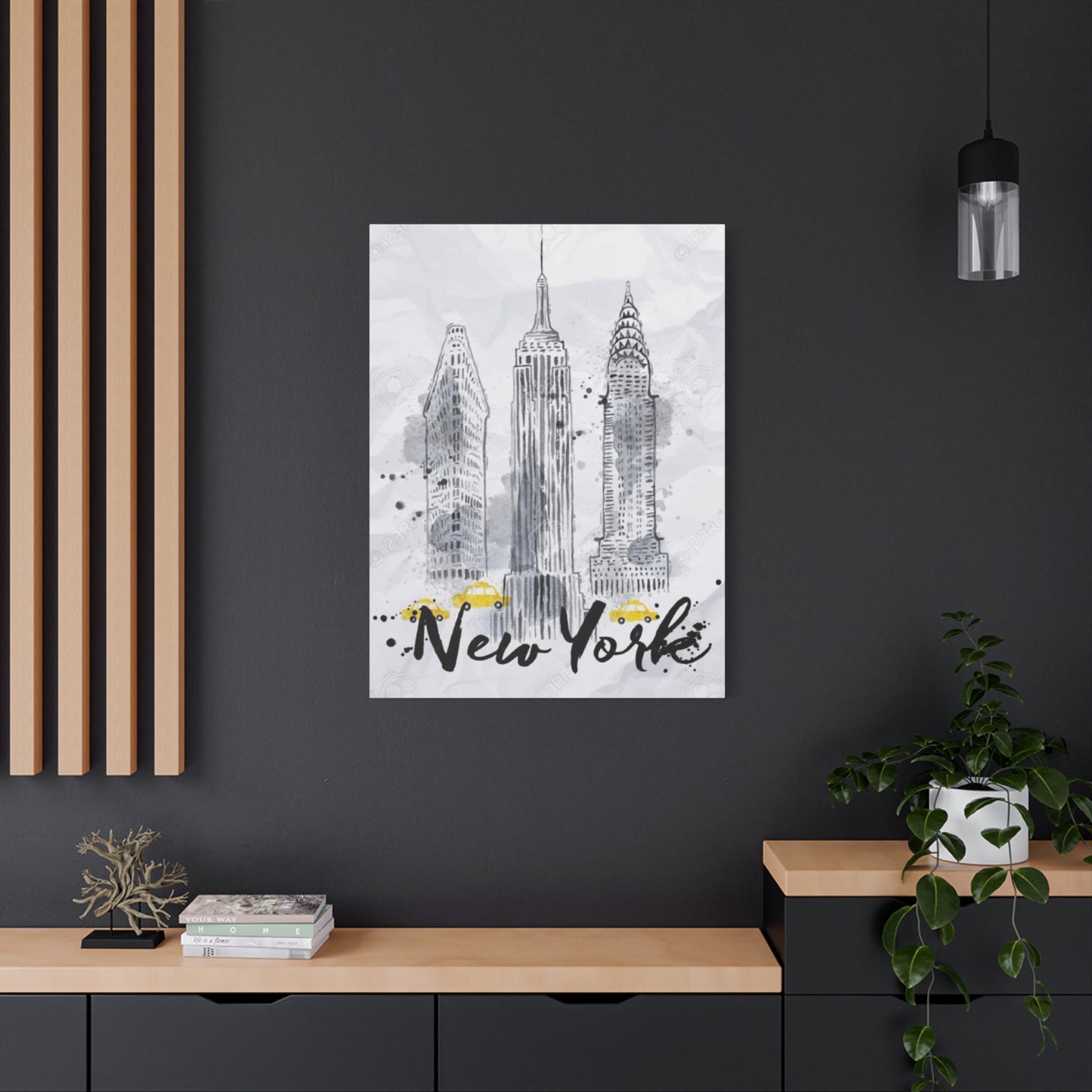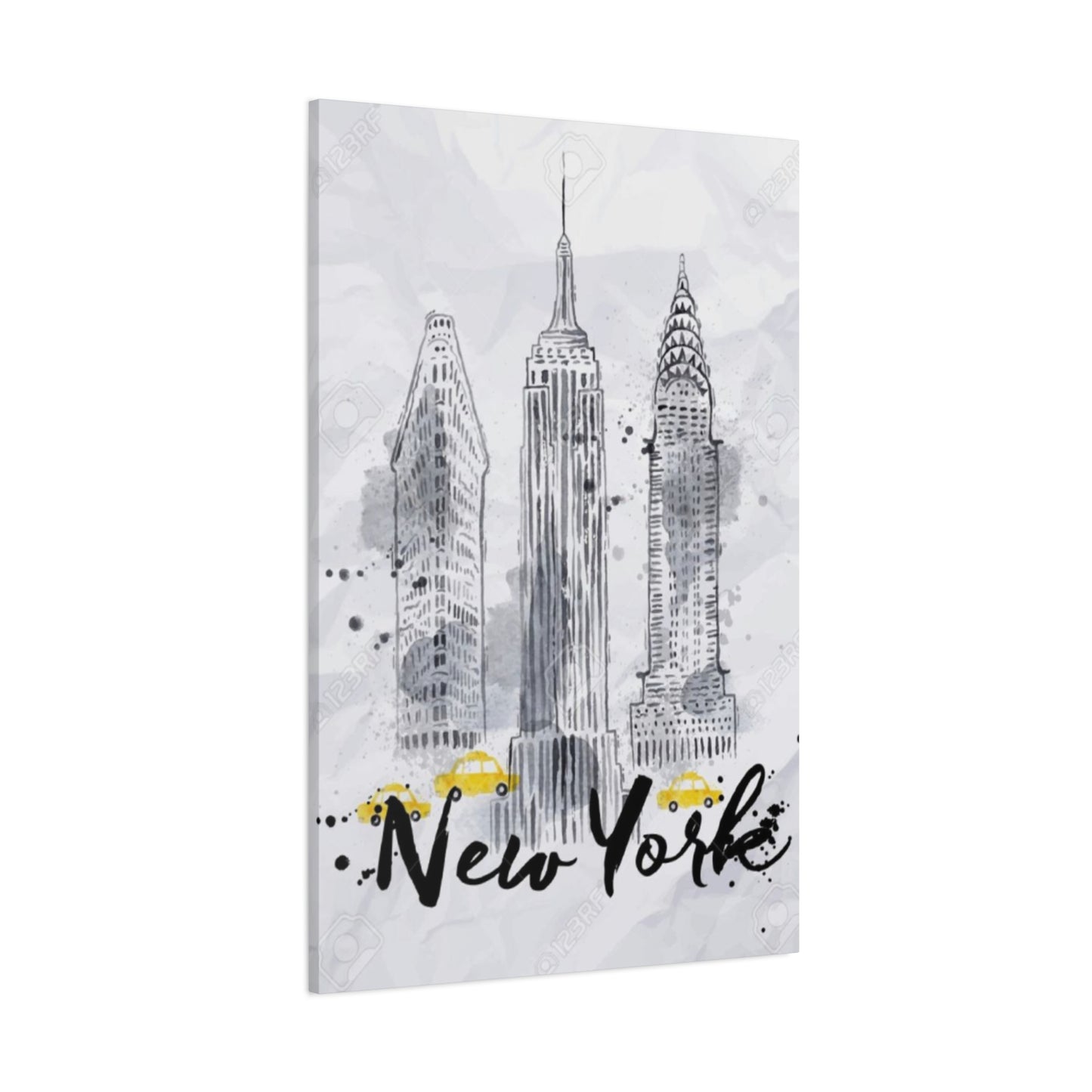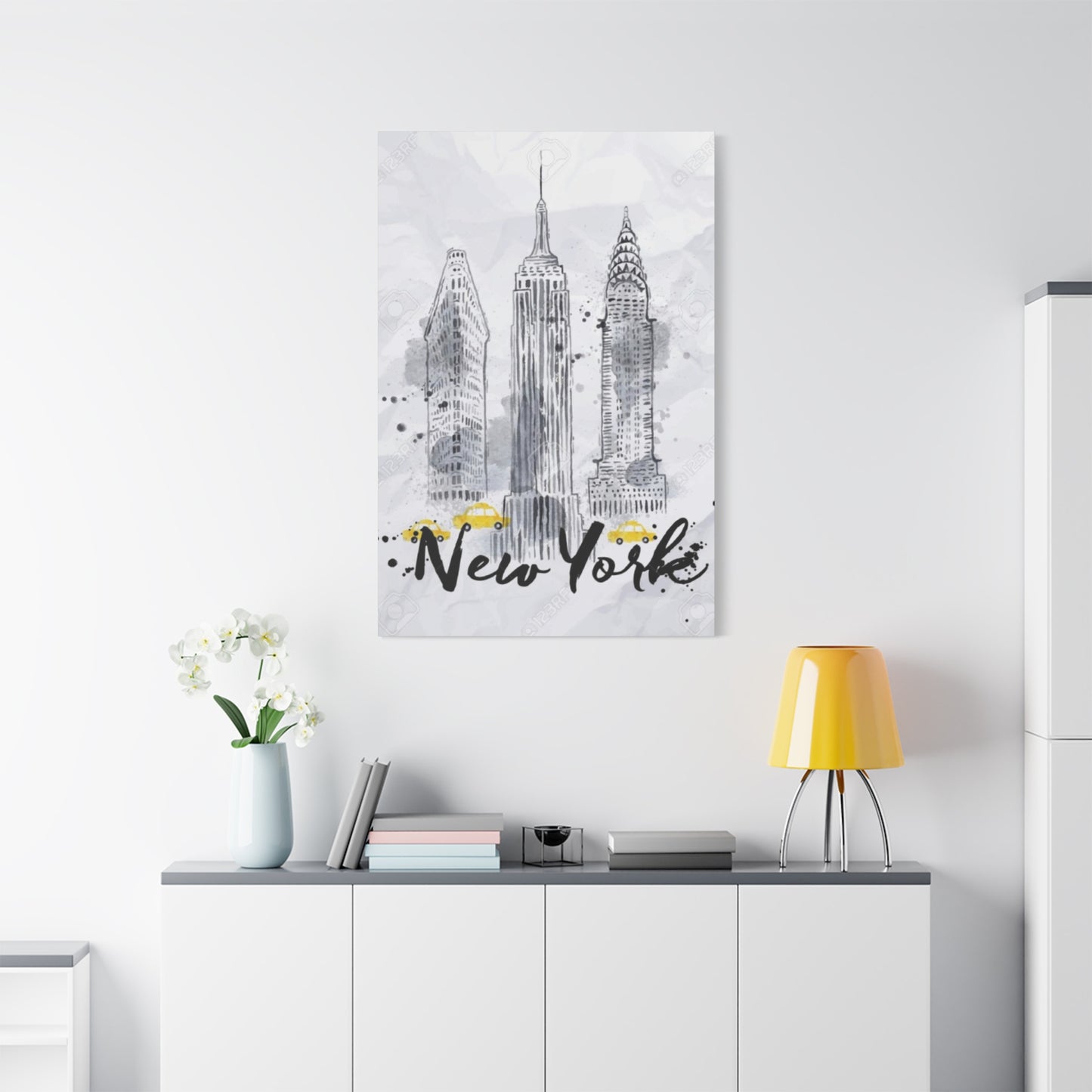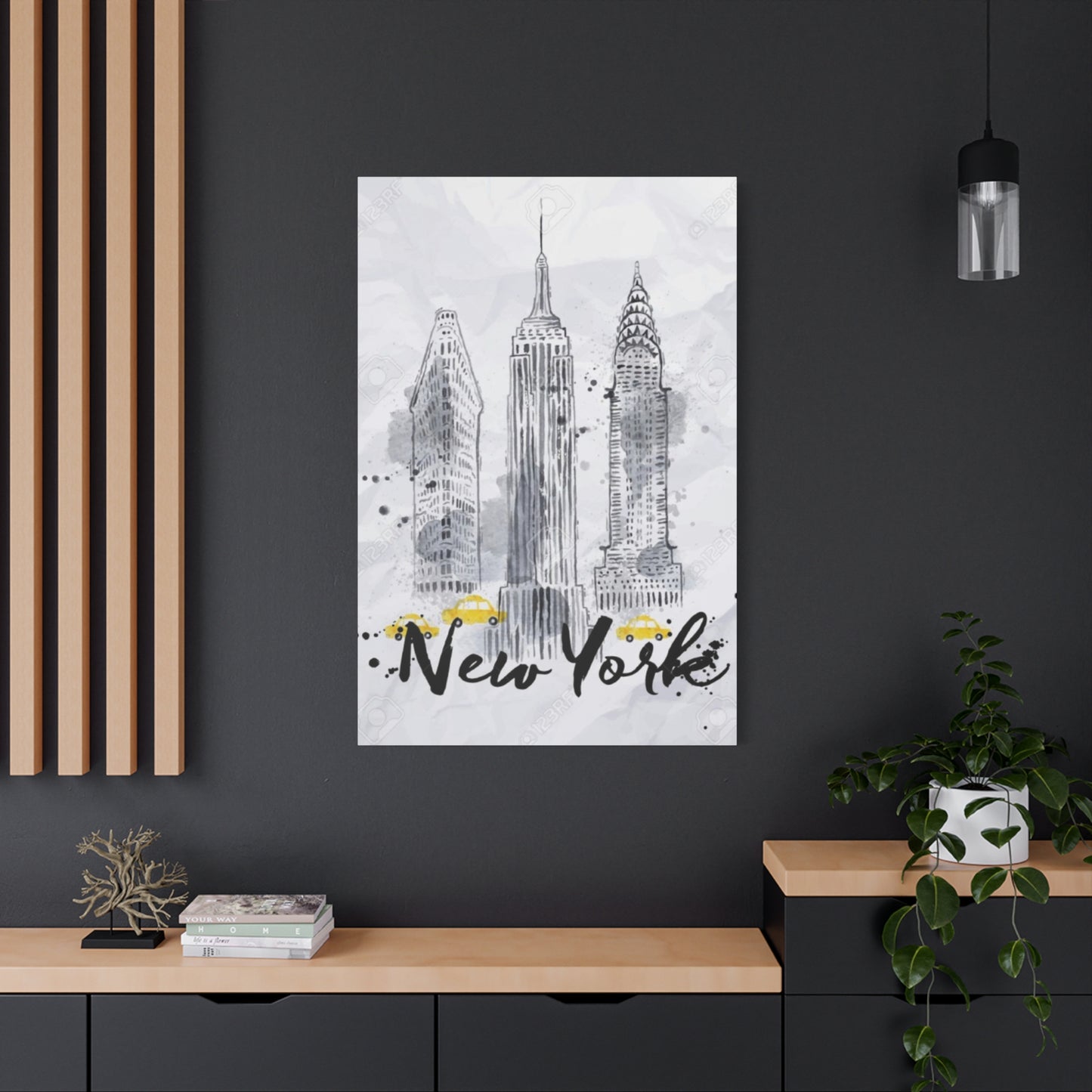NYC Skyline Wall Art: Master Collection of Empire State Building Drawings and Prints
The magnificent Manhattan skyline has captivated artists, photographers, and art enthusiasts for decades, with the Empire State Building standing as the crown jewel of architectural artistry. This towering masterpiece continues to inspire countless creative interpretations, from detailed pencil sketches to vibrant digital compositions. When it comes to transforming living environments through artistic expression, few subjects command the same level of reverence and visual impact as New York City's most recognizable landmark rendered in various artistic mediums.
Contemporary wall art featuring Manhattan's skyline offers an unparalleled opportunity to bring metropolitan sophistication into any room. The Empire State Building, with its distinctive Art Deco architecture and commanding presence, serves as the perfect focal point for artistic compositions that celebrate urban grandeur. Whether displayed in residential settings, corporate offices, or commercial establishments, these artistic interpretations create an immediate connection to one of the world's most dynamic cities.
The artistic appeal of NYC skyline wall art extends far beyond simple decoration. These pieces serve as conversation starters, mood enhancers, and sources of daily inspiration. The vertical lines and geometric patterns inherent in skyscraper architecture naturally complement various decorative styles, making Empire State Building artwork remarkably versatile for different aesthetic preferences.
Iconic Empire State Building Drawings
The Empire State Building stands as perhaps the most recognizable architectural marvel in artistic representations worldwide. Artists have been drawn to its distinctive silhouette since its completion in 1931, creating countless interpretations that capture both its structural magnificence and cultural significance. These artistic renderings range from highly detailed architectural studies to impressionistic interpretations that emphasize mood and atmosphere over precise documentation.
Traditional pencil drawings of the Empire State Building often focus on the building's intricate architectural details, including the setbacks that create its distinctive stepped profile, the ornate spire that pierces the Manhattan sky, and the numerous windows that create fascinating patterns of light and shadow throughout different times of day. Master artists have developed various techniques for capturing these elements, from precise line work that documents every architectural feature to more expressive approaches that emphasize the building's emotional impact on viewers.
Watercolor interpretations offer another dimension to Empire State Building artwork, allowing artists to explore the interplay between the building's solid mass and the ever-changing atmospheric conditions that surround it. These pieces often capture the building emerging from morning fog, bathed in golden sunset light, or illuminated against dramatic storm clouds. The transparent nature of watercolor media perfectly complements the way light interacts with glass and steel surfaces, creating ethereal effects that photography sometimes cannot achieve.
Digital art has opened new possibilities for Empire State Building representations, enabling artists to experiment with colors, textures, and compositions that would be impossible with traditional media. Some digital artists create hyperrealistic renderings that rival photographs in their detail and accuracy, while others push the boundaries of artistic expression by incorporating surreal elements, abstract color schemes, or futuristic interpretations of this historic landmark.
The emotional resonance of Empire State Building drawings extends beyond their visual appeal. Many people associate this iconic structure with significant life moments, romantic movies, or dreams of urban adventure. Artists often tap into these emotional connections, creating pieces that evoke feelings of aspiration, romance, or metropolitan excitement. The building's role in popular culture, from King Kong to Sleepless in Seattle, adds layers of meaning that resonate with viewers from diverse backgrounds.
Contemporary artists continue to find fresh approaches to depicting the Empire State Building, incorporating it into mixed-media compositions, street art interpretations, and minimalist designs that reduce the structure to its essential geometric elements. These modern interpretations demonstrate the enduring relevance of this architectural icon and its continued ability to inspire creative expression across generations of artists.
NYC Skyline in Wall Art
The complete Manhattan skyline represents one of the most photographed and artistically interpreted urban landscapes in the world. When translated into wall art, these panoramic views capture the dynamic energy and architectural diversity that define New York City's unique character. The Empire State Building typically serves as a central anchor point in these compositions, surrounded by other iconic structures that collectively create a visual symphony of urban development.
Panoramic skyline artworks allow viewers to appreciate the scale and complexity of Manhattan's built environment. These pieces often showcase the interplay between different architectural styles and historical periods, from pre-war Art Deco masterpieces to contemporary glass towers. The Empire State Building's position within these compositions helps establish visual hierarchy and provides viewers with a familiar reference point for understanding the relative scale of surrounding structures.
Artists working with skyline compositions face unique challenges in creating balanced, visually compelling arrangements. The varying heights, architectural styles, and building materials require careful consideration of how different elements interact within the overall composition. Successful skyline art manages to capture both the individual character of significant buildings like the Empire State Building while maintaining the cohesive unity that makes the Manhattan skyline instantly recognizable.
Seasonal variations in skyline artwork offer opportunities to explore how changing light conditions, weather patterns, and atmospheric effects influence the appearance of familiar architectural landmarks. Winter scenes might emphasize the stark contrast between snow-covered buildings and gray winter skies, while summer compositions could highlight the warm golden light that bathes the Empire State Building during extended evening hours. These seasonal interpretations help viewers connect with the living, breathing nature of the city beyond static architectural documentation.
The perspective chosen for skyline artwork significantly impacts the viewer's emotional response to the piece. Views from across water, such as from Brooklyn or New Jersey, provide expansive vistas that emphasize the grandeur and scale of the Manhattan skyline. Elevated perspectives from within the city itself offer more intimate views that help viewers imagine themselves as part of the urban landscape. Ground-level perspectives create dramatic upward views that emphasize the towering height of structures like the Empire State Building.
Color treatment in skyline artwork ranges from realistic representations that accurately capture the natural colors of building materials and atmospheric conditions to more interpretive approaches that use color to convey mood, emotion, or artistic vision. Monochromatic treatments can emphasize form and texture, while bold color palettes might reflect the vibrant energy and diversity of urban life. The Empire State Building's famous colored lighting displays provide additional opportunities for artists to incorporate dynamic color elements into their skyline compositions.
Choosing Empire State Building Prints
Selecting the perfect Empire State Building print requires consideration of multiple factors that influence both aesthetic impact and practical integration into existing decorative schemes. The vast array of available styles, sizes, and artistic approaches means that potential buyers must carefully evaluate their specific needs, preferences, and environmental constraints before making final decisions.
Print quality represents perhaps the most critical factor in choosing Empire State Building artwork. High-quality reproductions should accurately capture the subtle tonal variations, fine detail work, and color accuracy present in the original artwork. Giclée printing techniques, which use archival inks and museum-quality papers or canvases, provide superior longevity and color reproduction compared to standard printing methods. These premium printing processes ensure that Empire State Building prints maintain their visual impact and color accuracy for decades when properly cared for and displayed.
The choice between different print substrates significantly affects both the appearance and durability of Empire State Building artwork. Canvas prints offer a traditional fine art appearance with subtle texture that complements both photographic and painted interpretations of the iconic building. High-quality paper prints provide crisp detail reproduction and vibrant color saturation, particularly suitable for detailed architectural drawings or photographs. Metal prints create contemporary, high-gloss finishes that can make Empire State Building imagery appear to glow with inner light, particularly effective for nighttime scenes or dramatic lighting conditions.
Sizing considerations must account for both the viewing distance and the proportional relationship between the artwork and surrounding furnishings. Large Empire State Building prints create dramatic focal points that can anchor entire room designs, while smaller pieces work well as part of gallery wall arrangements or in more intimate settings. The vertical orientation inherent in most Empire State Building compositions makes them particularly effective for filling tall wall areas or complementing high ceilings.
Limited edition prints offer collectors the opportunity to own more exclusive versions of Empire State Building artwork, often featuring enhanced production values, artist signatures, or special packaging. These limited releases may include additional documentation about the artist's creative process or the specific techniques used in creating the original work. While limited editions typically command higher prices, they may also provide better long-term value retention for serious art collectors.
Authentication and provenance become important considerations when purchasing Empire State Building prints, particularly for limited editions or works by established artists. Reputable dealers should provide documentation regarding print runs, production methods, and artist approval. This documentation not only ensures the legitimacy of the purchase but also provides important information for insurance purposes and future resale considerations.
The reputation and track record of print publishers or galleries can significantly impact both the quality of Empire State Building prints and the overall purchasing experience. Established art publishers typically maintain higher quality standards and provide better customer service, including proper packaging for shipping and clear return policies. Researching publisher reputations through online reviews and artist testimonials helps ensure satisfactory purchase experiences.
Black and White NYC Skyline Art
Monochromatic interpretations of the New York City skyline possess a timeless quality that transcends specific historical periods or stylistic trends. Black and white NYC skyline art, featuring the Empire State Building as a prominent element, offers viewers the opportunity to focus on fundamental compositional elements such as form, texture, contrast, and spatial relationships without the potential distraction of color variations.
The absence of color in black and white skyline artwork forces both artists and viewers to engage more deeply with the essential structural and emotional elements of the composition. The Empire State Building's distinctive silhouette becomes even more pronounced when rendered in monochrome, as viewers must rely entirely on tonal variations and contrasts to appreciate the building's architectural details and spatial relationships with surrounding structures.
Historical black and white photography of the NYC skyline provides a rich tradition that contemporary artists continue to explore and reinterpret. Classic images from photographers like Berenice Abbott, Andreas Feininger, and Henri Cartier-Bresson established visual languages for depicting urban landscapes that continue to influence modern artistic interpretations. These historical precedents demonstrate how black and white imagery can capture not just the physical appearance of architectural landmarks but also the cultural and emotional significance they hold within urban communities.
Contrast management becomes crucial in successful black and white NYC skyline art. The Empire State Building's limestone and steel construction provides natural opportunities for dramatic tonal contrasts, particularly when illuminated by strong directional lighting. Artists working in monochrome must carefully balance highlight and shadow areas to maintain visual interest throughout the composition while ensuring that important architectural details remain clearly readable.
Texture reproduction takes on heightened importance in black and white skyline artwork, as color cannot be used to differentiate between various building materials and surfaces. The Empire State Building's façade offers rich textural opportunities, from the smooth expanses of limestone cladding to the intricate metalwork details around windows and decorative elements. Successful monochromatic interpretations emphasize these textural variations to create visual depth and interest.
Contemporary digital techniques have expanded the possibilities for black and white NYC skyline art beyond traditional photographic and drawing methods. Artists can now combine multiple exposures, selectively adjust tonal ranges, and incorporate various textural effects to create monochromatic interpretations that would be impossible to achieve through conventional darkroom techniques. These digital approaches allow for more experimental and artistic interpretations while maintaining the fundamental appeal of monochromatic imagery.
The versatility of black and white Empire State Building artwork makes it particularly suitable for diverse decorative contexts. Monochromatic pieces can complement both contemporary and traditional decorative styles, serving as neutral elements that enhance rather than compete with existing color schemes. This versatility makes black and white NYC skyline art an excellent choice for commercial environments, rental properties, or homes where decorative flexibility is important.
Colors in Empire State Building Drawings
The Empire State Building's famous lighting system provides artists with a unique opportunity to explore dynamic color relationships in their artistic interpretations. Since 1976, the building has been illuminated in various color combinations to commemorate holidays, special events, and cultural celebrations, creating an ever-changing palette that artists can incorporate into their creative works.
Traditional color approaches to Empire State Building artwork often emphasize the natural tones of the building's construction materials. The warm limestone façade creates subtle variations of cream, beige, and golden tones that change throughout the day as natural lighting conditions shift. These natural color variations provide a foundation for realistic artistic interpretations while offering opportunities for more interpretive approaches that enhance or exaggerate these inherent color qualities.
Seasonal color interpretations allow artists to explore how changing atmospheric conditions affect the perceived colors of the Empire State Building and surrounding skyline elements. Spring compositions might emphasize fresh, vibrant greens from nearby Central Park contrasting with the building's neutral tones. Summer scenes could feature warm golden hour lighting that bathes the entire structure in rich amber hues. Autumn artwork might incorporate the warm reds and oranges of changing foliage, while winter pieces could explore the cool blues and grays of overcast skies reflecting off the building's surfaces.
The building's famous holiday lighting displays provide inspiration for festive artistic interpretations that capture the celebratory spirit of various occasions throughout the year. Red, white, and blue illumination for patriotic holidays, green and red for Christmas celebrations, or rainbow colors for Pride Month create opportunities for artists to explore bold, vibrant color palettes that reflect contemporary cultural celebrations while maintaining the building's architectural integrity.
Artistic license allows for more experimental color approaches that prioritize emotional impact or artistic vision over realistic representation. Some artists create Empire State Building drawings using entirely non-naturalistic color palettes, perhaps rendering the structure in electric blues, vivid purples, or warm oranges to convey specific moods or themes. These interpretive approaches can create striking visual impact while maintaining the building's recognizable silhouette and architectural character.
Color temperature considerations play important roles in establishing mood and atmosphere in Empire State Building artwork. Warm color palettes featuring yellows, oranges, and reds can create feelings of energy, optimism, and celebration. Cool color schemes using blues, greens, and purples might evoke tranquility, sophistication, or contemplation. Understanding these psychological color associations helps artists make deliberate choices that support their intended emotional impact.
The interaction between the Empire State Building's colors and those of surrounding skyline elements requires careful consideration in comprehensive artistic compositions. Artists must balance the visual weight of different colored elements to maintain compositional harmony while ensuring that the Empire State Building retains its prominence within the overall scene. This might involve using complementary color relationships, analogous color schemes, or strategic use of neutral tones to create visual cohesion.
Digital art tools have greatly expanded the possibilities for color experimentation in Empire State Building artwork. Artists can quickly test multiple color combinations, adjust saturation levels, and explore various color harmony relationships without the time and material investments required by traditional media. This technological advancement has enabled more experimental and diverse approaches to color in architectural artwork while maintaining the ability to create highly refined final pieces.
Framing NYC Skyline Wall Art
Professional framing significantly impacts both the visual presentation and long-term preservation of NYC skyline wall art featuring the Empire State Building. The choice of framing materials, styles, and techniques can enhance the artwork's visual impact, protect it from environmental damage, and ensure its integration with existing decorative elements.
Matting considerations play crucial roles in presenting Empire State Building artwork effectively. Proper matting creates visual breathing room around the artwork, prevents the print from contacting the glass surface, and provides opportunities to enhance the overall color palette through strategic mat color selection. Neutral mat colors such as white, cream, or light gray typically work well with most Empire State Building artwork, allowing the image to take center stage without competing visual elements.
Custom matting allows for more creative approaches that can enhance specific aspects of Empire State Building artwork. Double or triple mat configurations create additional visual depth and sophistication, while colored mats can be selected to complement specific elements within the artwork itself. For example, a subtle blue mat might echo sky tones in the artwork, while a warm gray mat could complement the building's limestone façade.
Frame material selection should consider both aesthetic compatibility and preservation requirements. Wood frames offer traditional elegance and warmth that complements most artistic styles, from classical architectural drawings to contemporary interpretations. Metal frames provide clean, modern appearances that work particularly well with photographic prints or minimalist artistic approaches. The finish quality of frame materials affects both appearance and longevity, with higher-quality finishes maintaining their appearance longer under normal display conditions.
Glass selection represents a critical decision that affects both the artwork's appearance and its protection from environmental hazards. Regular glass provides basic protection but may create reflections that interfere with viewing under certain lighting conditions. Museum-quality UV-filtering glass provides superior protection from harmful ultraviolet radiation while reducing reflections through special coatings. Acrylic glazing offers lightweight alternatives that resist shattering, making it suitable for larger pieces or high-traffic environments.
Conservation framing techniques become important for valuable or irreplaceable Empire State Building artwork. Acid-free mounting materials prevent chemical interactions that could damage the artwork over time. Reversible mounting techniques allow for future conservation treatments without permanent alterations to the original piece. These conservation considerations may increase initial framing costs but provide essential protection for artwork intended for long-term display and enjoyment.
Frame sizing must account for the specific dimensions of Empire State Building artwork while considering the proportional relationships with surrounding wall areas and furnishings. Oversized frames can overwhelm smaller pieces, while inadequate frame presence may cause larger artworks to appear unsupported or unfinished. Professional framers can provide guidance on appropriate frame width and profile selections that enhance rather than detract from the artwork itself.
Installation considerations extend beyond simple hanging to include factors such as wall type, hanging systems, and environmental conditions. Heavy frames require appropriate wall anchors and hanging hardware to ensure secure mounting. Professional installation may be necessary for large or valuable Empire State Building artwork to ensure proper support and minimize risk of damage during mounting.
Climate control affects both the artwork and framing materials over time. Extreme temperature fluctuations or humidity variations can cause expansion and contraction in both the artwork and frame components, potentially leading to warping, separation, or other forms of damage. Proper framing techniques include allowances for normal environmental variations while providing protection from more extreme conditions.
Detailed Drawings of Empire State Building
Architectural precision in Empire State Building drawings requires understanding the building's structural elements, proportional relationships, and distinctive design features that make it instantly recognizable among world landmarks. Artists who specialize in detailed architectural rendering must master techniques for accurately depicting the building's setback configuration, window patterns, decorative elements, and the interplay of different materials used in its construction.
The Empire State Building's stepped profile creates complex perspective challenges that demand sophisticated understanding of architectural drawing principles. Each setback level presents different viewing angles and shadow patterns that change dramatically based on the observer's position and the time of day. Master architectural artists develop systematic approaches for mapping these perspective relationships, often beginning with basic geometric frameworks that establish the building's fundamental proportions before adding detailed surface elements.
Window pattern documentation represents a significant aspect of detailed Empire State Building drawings. The building contains over 6,500 windows arranged in regular patterns that create rhythm and texture across the façade surfaces. Accurate representation of these window arrangements requires patience and systematic approaches that maintain consistency while capturing the subtle variations that occur at different building levels and orientations.
Ornamental detail work distinguishes exceptional Empire State Building drawings from more simplified interpretations. The building features numerous Art Deco decorative elements, including stylized eagles, geometric patterns, and metalwork details that require careful observation and rendering skills. These decorative elements add visual interest and historical authenticity to detailed drawings while demonstrating the artist's technical capabilities and attention to architectural accuracy.
Surface material representation challenges artists to convey the different textures and reflective qualities of limestone, steel, and glass components within the building's construction. Limestone areas require techniques for suggesting the subtle texture and color variations inherent in natural stone, while metalwork demands approaches for depicting reflective surfaces and sharp geometric edges. Glass areas present particular challenges, as they must suggest transparency while indicating structural framing and interior elements visible through the windows.
Lighting effects dramatically impact the appearance of detailed Empire State Building drawings. The building's numerous surfaces create complex patterns of highlight and shadow that change throughout the day and across seasons. Successful detailed drawings often capture specific lighting conditions that enhance the building's three-dimensional form and architectural character. Some artists specialize in dramatic lighting situations, such as storm conditions or golden hour illumination, that create striking visual effects.
Scale relationship management becomes crucial in detailed Empire State Building drawings, particularly when the building appears alongside other Manhattan landmarks or street-level elements. Artists must maintain accurate proportional relationships while ensuring that fine architectural details remain visible and readable. This often requires strategic decisions about viewing distance, focal emphasis, and the level of detail appropriate for different areas within the composition.
Technical drawing tools and media significantly influence the final appearance of detailed Empire State Building artwork. Traditional media such as graphite pencils, pen and ink, or silverpoint offer different textural qualities and line characteristics that affect how architectural details are perceived. Digital drawing tools provide additional capabilities for precision, correction, and experimentation while maintaining the ability to achieve highly refined final results.
Modern vs Classic NYC Skyline Art
Contemporary approaches to NYC skyline art reflect current artistic movements, technological capabilities, and cultural perspectives while building upon established traditions of urban landscape representation. The Empire State Building serves as a bridge between historical and contemporary artistic interpretations, maintaining its iconic status while inspiring new creative approaches that speak to modern audiences.
Classic NYC skyline art traditions established during the early to mid-twentieth century emphasized architectural documentation, romantic urban imagery, and the celebration of technological progress represented by skyscrapers like the Empire State Building. Artists such as Georgia O'Keeffe, Charles Sheeler, and numerous photographers created works that portrayed the city's vertical landscape as symbols of American ambition, industrial capability, and cultural sophistication.
Modern digital techniques have revolutionized possibilities for NYC skyline art creation, enabling artists to combine photographic elements, digital painting, 3D modeling, and various special effects to create interpretations that would be impossible through traditional media alone. These technological capabilities allow for experimental approaches that can emphasize certain aspects of the Empire State Building or surrounding cityscape while de-emphasizing others according to artistic vision.
Stylistic evolution reflects broader changes in artistic movements and cultural attitudes toward urban environments. While classic skyline art often portrayed the city as a unified, harmonious composition, contemporary approaches might emphasize diversity, complexity, cultural tensions, or environmental concerns. The Empire State Building might appear in contexts that explore themes of sustainability, social justice, or global interconnectedness that were less prominent in earlier artistic traditions.
Color palette differences distinguish many modern NYC skyline interpretations from their classic predecessors. Contemporary artists often employ bold, saturated colors, non-naturalistic color schemes, or digital color manipulations that create striking visual effects. These modern color approaches can transform familiar architectural landmarks like the Empire State Building into more abstract or symbolic representations that serve broader artistic or cultural commentary.
Mixed media approaches represent a significant development in modern NYC skyline art, allowing artists to combine traditional drawing or painting techniques with photography, digital manipulation, collage elements, or three-dimensional components. These hybrid approaches can create layers of meaning and visual complexity that engage viewers in different ways than purely traditional or purely digital works.
Cultural context influences how modern artists approach Empire State Building imagery compared to their classical predecessors. Contemporary artists might incorporate references to popular culture, social media aesthetics, environmental concerns, or global political issues that affect how viewers interpret urban landmarks. These contemporary contexts can add layers of meaning that extend beyond pure architectural appreciation.
Commercial applications have expanded dramatically for both classic and modern NYC skyline art styles. While traditional approaches often appeal to corporate clients seeking sophisticated, timeless imagery, modern interpretations might target younger demographics, technology companies, or brands seeking cutting-edge visual associations. The Empire State Building's universal recognition makes it valuable for both traditional and contemporary commercial applications.
Market preferences vary significantly between classic and modern NYC skyline art styles, with different demographic groups showing preferences for different aesthetic approaches. Understanding these market differences helps artists, collectors, and dealers make informed decisions about which styles to create, acquire, or promote within specific market segments.
DIY Empire State Building Wall Art
Creating original Empire State Building artwork provides opportunities for personal artistic expression while developing technical skills and achieving cost-effective decorative solutions. DIY approaches range from simple tracing exercises suitable for beginners to sophisticated projects that challenge experienced artists and crafters.
Sketching fundamentals form the foundation for most DIY Empire State Building art projects. Basic observational drawing skills, proportion assessment techniques, and perspective understanding enable creators to produce recognizable architectural representations even without formal artistic training. Starting with simplified outline drawings helps build confidence before progressing to more detailed interpretations that include architectural specifics and environmental context.
Reference material gathering represents a crucial step in DIY Empire State Building projects. High-quality photographs from multiple angles, architectural drawings, and historical images provide essential information for accurate representation. Online resources, library archives, and personal photography can supply comprehensive reference materials that support various artistic approaches and stylistic preferences.
Media selection significantly impacts both the creative process and final results of DIY Empire State Building artwork. Graphite pencils offer forgiving, erasable media suitable for beginners while providing sufficient range for sophisticated results in experienced hands. Colored pencils, markers, watercolors, and acrylic paints each offer different possibilities and challenges that affect both technique requirements and aesthetic outcomes.
Digital creation tools have made sophisticated DIY Empire State Building art accessible to creators without traditional artistic training. Tablet-based drawing applications, desktop graphics software, and online design tools provide templates, tutorials, and correction capabilities that enable impressive results. These digital approaches also offer unlimited experimentation opportunities without material costs or permanent commitments to specific artistic decisions.
Tracing techniques can provide starting points for DIY Empire State Building projects while building confidence and technical understanding. Projecting reference images, using light tables, or employing grid methods allows creators to establish accurate basic proportions before developing personal artistic interpretations. These foundation techniques can gradually give way to more independent creative approaches as skills develop.
Mixed media approaches enable DIY creators to combine various materials and techniques within single Empire State Building projects. Collage elements, textural additions, or photographic components can enhance basic drawings or paintings while allowing creators to experiment with different artistic effects. These mixed media approaches can compensate for limitations in specific technical skills while creating unique, personalized results.
Step-by-step progression helps ensure successful completion of DIY Empire State Building projects. Beginning with basic geometric shapes that establish the building's fundamental form, then gradually adding architectural details, surface textures, and environmental context creates manageable development stages. This systematic approach reduces frustration while building technical capabilities progressively.
Problem-solving strategies become essential when DIY Empire State Building projects encounter technical or aesthetic challenges. Understanding common difficulties such as perspective problems, proportional issues, or media handling troubles helps creators develop solutions rather than abandoning projects. Online tutorials, instructional books, and community forums provide resources for overcoming typical obstacles.
Finishing and presentation techniques can significantly enhance the impact of completed DIY Empire State Building artwork. Proper erasing, cleaning, protective sprays, mounting, and framing transform rough creative exercises into presentation-worthy pieces suitable for display or gifting. These finishing steps often determine whether DIY projects appear amateur or professional in final presentation.
Combining NYC Skyline with Cityscapes
Integrating New York City skyline elements with broader urban landscape compositions creates opportunities for expanded narrative possibilities and enhanced visual complexity. The Empire State Building serves as an excellent anchor point for these expanded compositions while maintaining its iconic recognition within more comprehensive urban contexts.
Compositional balance becomes crucial when combining Empire State Building imagery with additional cityscape elements. The building's distinctive silhouette and cultural significance can easily dominate compositions, potentially overwhelming other important elements unless carefully managed through strategic placement, size relationships, and visual weight distribution. Successful combinations maintain the building's prominence while allowing other urban elements to contribute meaningfully to the overall composition.
Perspective integration challenges artists to maintain consistent viewing angles and spatial relationships when combining skyline views with street-level or other architectural elements. The Empire State Building viewed from various distances and heights presents different proportional relationships that must align logically with surrounding cityscape components. These technical requirements demand sophisticated understanding of perspective principles and careful planning during initial composition development.
Thematic coherence helps unify disparate cityscape elements within comprehensive urban compositions featuring the Empire State Building. Common themes might include historical development, architectural diversity, urban energy, or cultural celebration. These unifying concepts provide frameworks for selecting complementary elements and treatment approaches that create satisfying visual narratives rather than disconnected collections of urban imagery.
Atmospheric effects provide opportunities for creating unified visual environments that combine Empire State Building imagery with broader cityscape elements. Weather conditions, lighting situations, and seasonal characteristics affect all architectural elements similarly, creating natural unity within expanded compositions. Fog, rain, snow, or dramatic lighting can serve as unifying elements that tie together diverse urban components.
Scale variation within combined cityscape compositions requires careful management to maintain both visual interest and logical spatial relationships. The Empire State Building's massive scale must be balanced against smaller architectural elements, street-level details, or human figures in ways that reinforce rather than contradict the intended perspective and viewing distance. These scale relationships significantly impact viewer engagement and compositional success.
Color coordination becomes more complex when combining Empire State Building imagery with diverse cityscape elements that may feature different material types, lighting conditions, or cultural associations. Successful color strategies might emphasize harmony through related color schemes, create contrast through complementary relationships, or use neutral palettes that allow individual elements to contribute their natural color characteristics without visual conflict.
Cultural representation considerations become important when combining Empire State Building imagery with cityscape elements that reflect New York's diverse communities and neighborhoods. These expanded compositions can celebrate the city's cultural richness while maintaining respectful and accurate representation of different architectural traditions, community landmarks, and social contexts that contribute to the city's overall character.
Technical execution strategies must account for the increased complexity of combined cityscape compositions compared to simpler Empire State Building studies. Artists might employ selective focus techniques that emphasize certain areas while simplifying others, use different levels of detail in different composition zones, or employ various media combinations that enhance specific elements according to their narrative importance.
Large vs Small Empire State Building Prints
Print size selection significantly impacts both the visual impact and practical considerations associated with Empire State Building artwork display. Understanding the advantages and limitations of different size options helps ensure optimal results for specific viewing environments, decorative goals, and budget constraints.
Large format Empire State Building prints create dramatic focal points that can anchor entire room designs while providing impressive detail visibility and immersive viewing experiences. These substantial pieces, often measuring 24 inches or larger in any dimension, command attention and create strong architectural connections that complement the monumentality of their subject matter. Large prints work particularly well in spaces with high ceilings, expansive wall areas, or contemporary decorative schemes that emphasize bold artistic statements.
Viewing distance relationships become crucial considerations for large Empire State Building prints, as adequate space must be available for viewers to appreciate the full composition without being overwhelmed by excessive detail or scale. Large prints require minimum viewing distances of six to eight feet to allow comfortable appreciation of the complete image, making them most suitable for living rooms, lobbies, conference rooms, or other spaces where such distances are naturally available.
Detail reproduction capabilities represent a significant advantage of large format Empire State Building prints. Fine architectural elements, surface textures, and atmospheric effects become clearly visible at larger sizes, allowing viewers to discover new details and appreciate artistic techniques that might be lost in smaller reproductions. This enhanced detail visibility makes large prints particularly valuable for architectural photography, detailed drawings, or artwork where technical excellence is important.
Small format Empire State Building prints offer different advantages including affordability, flexibility in placement options, and compatibility with gallery wall arrangements or intimate viewing environments. Prints smaller than 16 inches in any dimension can work effectively in bedrooms, bathrooms, hallways, or office cubicles where available wall area or viewing distances make larger prints impractical.
Intimacy factors distinguish small Empire State Building prints from their large format counterparts. Smaller pieces invite closer inspection and can create personal connections between viewers and the artwork that might be overwhelmed by the dramatic presence of larger prints. This intimate quality makes small prints suitable for personal collections, gift applications, or spaces where subtle artistic enhancement is preferred over bold decorative statements.
Gallery wall integration possibilities make small Empire State Building prints valuable components of larger decorative schemes that combine multiple related images. These arrangements might include various NYC landmarks, different views of the same building, or artistic interpretations in different media or styles. Small prints provide flexibility for creating balanced, diverse arrangements that maintain visual coherence while exploring various aspects of the subject matter.
Production cost considerations often favor smaller Empire State Building prints, both in terms of printing expenses and framing requirements. Smaller prints require less expensive materials, smaller frames, and simpler installation procedures, making them accessible to broader audiences and suitable for applications where budget constraints are important factors.
Storage and transportation advantages make small Empire State Building prints more practical for certain applications. These pieces can be easily packaged for shipping, stored in standard portfolios, or transported without special handling requirements. This practicality makes small prints attractive for online sales, gift applications, or situations where logistical simplicity is valued.
Resolution requirements differ between large and small Empire State Building prints, with larger formats demanding higher resolution source images to maintain acceptable detail quality. Small prints can often utilize lower resolution source materials without noticeable quality degradation, providing more options for source imagery and potentially reducing production costs.
Environmental impact varies between large and small Empire State Building prints, with larger formats requiring more materials, energy, and resources for production and transportation. Environmentally conscious consumers might prefer smaller prints that reduce resource consumption while still providing satisfactory artistic results.
Using Light in NYC Skyline Drawings
Illumination treatment represents one of the most critical aspects of successful NYC skyline drawings featuring the Empire State Building. Light affects not only the visual appearance of architectural elements but also the emotional impact and atmospheric quality of urban landscape artwork.
Natural lighting variations throughout the day provide diverse opportunities for depicting the Empire State Building and surrounding skyline elements. Dawn light creates soft, subtle illumination that emphasizes vertical forms while minimizing harsh contrasts. Midday sun produces strong shadows and bright highlights that emphasize architectural details and three-dimensional forms. Golden hour lighting bathes the building in warm, romantic tones that enhance its limestone surfaces while creating dramatic sky contrasts.
Directional lighting considerations significantly impact the three-dimensional appearance of the Empire State Building in artistic representations. Front lighting flattens forms but provides even illumination of architectural details. Side lighting creates dramatic shadow patterns that emphasize the building's setback configuration and surface textures. Back lighting produces silhouette effects that emphasize form and proportion while minimizing detail visibility.
Artificial lighting effects offer opportunities for creating dramatic evening or nighttime interpretations of NYC skyline drawings. The Empire State Building's famous colored lighting displays provide focal points for nocturnal compositions, while the countless illuminated windows of surrounding buildings create patterns of light that suggest urban activity and energy. Street lighting, vehicle headlights, and illuminated signage add additional layers of artificial illumination that contribute to comprehensive urban lighting schemes.
Shadow management becomes crucial in NYC skyline drawings where multiple tall buildings create complex patterns of light and shadow interaction. The Empire State Building casts significant shadows on surrounding structures and receives shadows from neighboring buildings, depending on sun position and viewing angle. Understanding these shadow relationships helps create convincing spatial depth and realistic lighting effects.
Atmospheric perspective principles utilize light and air quality effects to suggest depth and distance in NYC skyline drawings. Buildings closer to the viewer appear with stronger contrasts and sharper detail, while more distant structures become progressively lighter and less distinct. These atmospheric effects help establish spatial relationships and create convincing depth illusions in skyline compositions.
Reflective surface treatment challenges artists to accurately depict how light interacts with the glass, metal, and polished stone surfaces common in modern skyscrapers. The Empire State Building's numerous windows create complex patterns of reflection and transmission that change based on viewing angle and lighting conditions. Mastering these reflective effects adds realism and visual interest to architectural drawings.
Weather effect integration allows artists to explore how various atmospheric conditions affect light transmission and distribution around the Empire State Building. Fog creates soft, diffused lighting that obscures distant elements while emphasizing closer forms. Storm clouds produce dramatic contrasts between dark sky areas and illuminated building surfaces. Rain creates reflective surfaces and atmospheric distortions that add visual complexity and emotional impact.
Time-based lighting changes provide opportunities for creating series of NYC skyline drawings that explore how the same architectural subjects appear under different illumination conditions. These temporal studies can demonstrate the artist's technical versatility while creating cohesive bodies of work that explore various aspects of urban lighting phenomena.
Mood enhancement through lighting manipulation allows artists to create emotional responses that extend beyond simple architectural documentation. Dramatic lighting can create feelings of excitement, romance, mystery, or contemplation. Understanding the psychological associations of different lighting conditions helps artists make deliberate choices that support their intended emotional impact.
Conclusion
NYC skyline wall art, especially featuring masterful drawings and prints of the iconic Empire State Building, offers a timeless celebration of one of the world’s most vibrant and inspiring cities. This collection captures the architectural grandeur, energy, and unmistakable silhouette of New York City’s skyline, allowing you to bring a piece of the urban spirit into your home or office. Whether you’re a native New Yorker, a passionate admirer, or simply captivated by cityscapes, this artwork serves as both a visual homage and a source of inspiration.
The Empire State Building stands as a symbol of ambition, resilience, and innovation—qualities that resonate deeply with anyone striving for greatness. By incorporating detailed skyline drawings and prints into your décor, you not only showcase artistic craftsmanship but also evoke the dynamic energy and cultural significance of NYC. These pieces bring sophistication and a sense of place, turning your walls into a gateway to the city that never sleeps.
From a design perspective, NYC skyline art is incredibly versatile. The monochromatic elegance of pencil sketches or the bold contrasts of ink prints complement a wide range of interior styles, from modern minimalism to industrial loft aesthetics. This adaptability makes it easy to create a gallery wall or spotlight a standout piece above a sofa, desk, or entryway, instantly elevating the ambiance of any room.
Moreover, NYC skyline wall art fosters a connection to urban life and the stories embedded in the city’s towering structures. It celebrates not just architecture but also the dreams, challenges, and triumphs that define New York. Displaying such art inspires creativity and ambition, making it an ideal choice for spaces where motivation and focus are key.
In conclusion, the master collection of Empire State Building drawings and NYC skyline prints is a powerful and elegant addition to any décor. It honors the spirit of New York City while adding artistic depth and urban sophistication to your space. Whether for your home or office, this wall art transforms your environment into a tribute to one of the world’s most iconic skylines, inspiring ambition and celebrating architectural beauty every day.

















